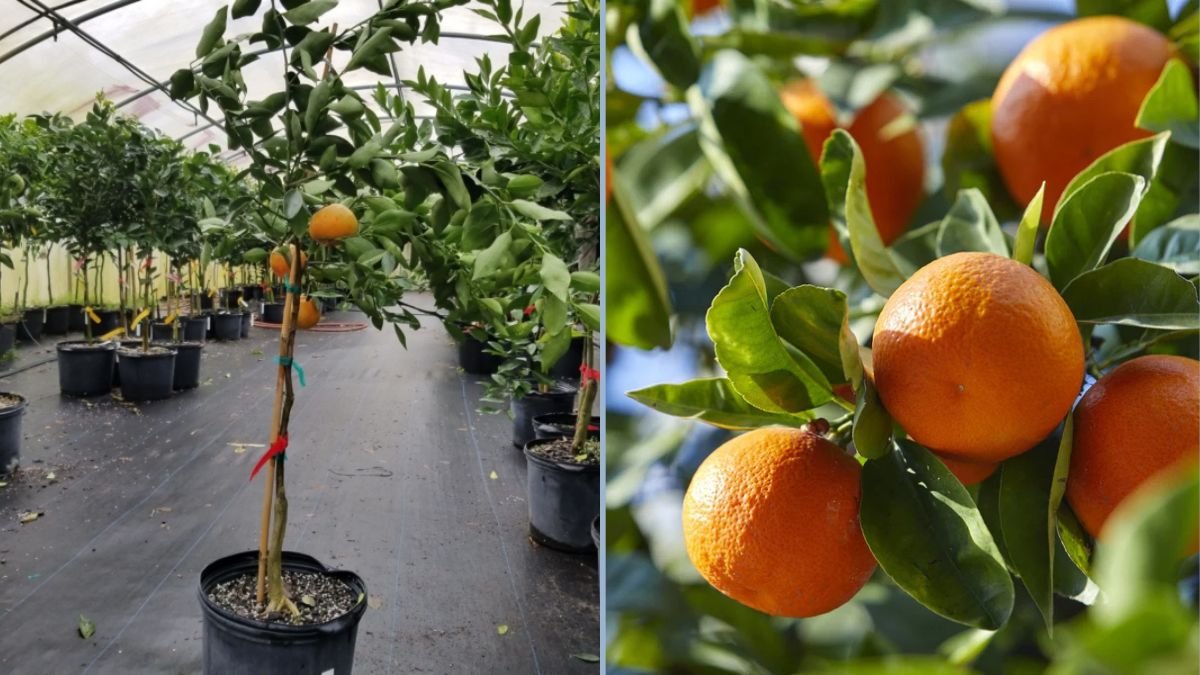Mandarin tangerines are beloved for their sweet, easy-to-peel fruits and vibrant flavor. Among the most popular varieties is the Dancy mandarin tangerine, known for its bright orange skin, rich sweetness, and exceptional aroma. Growing Dancy mandarins at home allows you to enjoy fresh, juicy fruits straight from your garden, while adding ornamental value to your outdoor space.
This guide will walk you through everything you need to know about growing Dancy mandarin tangerines, from choosing the right tree and planting site to care, pest management, and harvesting tips.
Why Choose Dancy Mandarin Tangerines?
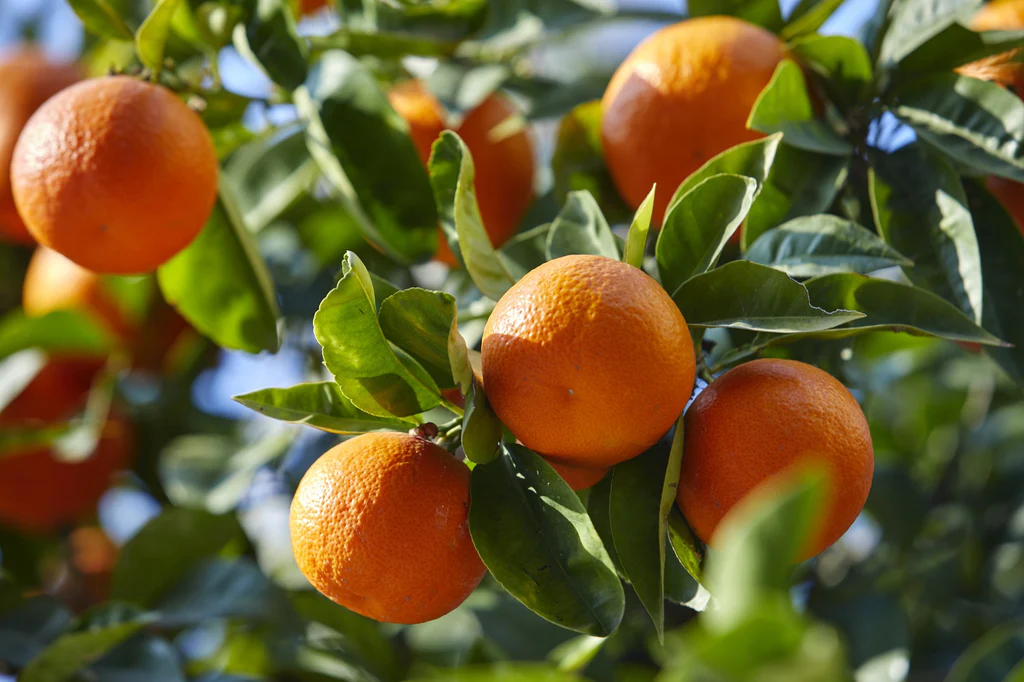
The Dancy mandarin is a top choice for gardeners and citrus enthusiasts because of its unique qualities:
- Sweet Flavor: Naturally sweet with low acidity, perfect for snacking or juicing.
- Easy-to-Peel Skin: Thin, smooth skin makes peeling effortless, ideal for children and quick snacks.
- Compact Size: Dancy mandarin trees are manageable in size, making them suitable for small gardens or containers.
- Winter Harvest: This variety matures in late fall to early winter, providing fresh citrus during the cooler months.
- Ornamental Appeal: Glossy green leaves and bright orange fruits make the tree a visual highlight in any garden.
With these characteristics, Dancy mandarin tangerines are perfect for home orchards, patio gardens, and backyard citrus enthusiasts.
Origin and Characteristics
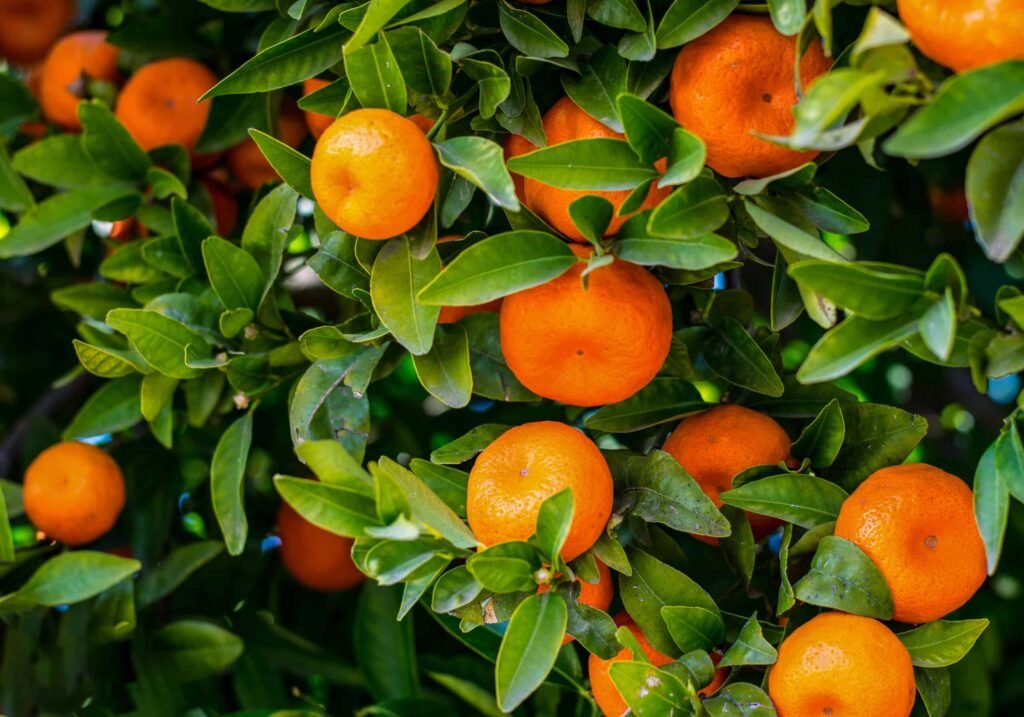
The Dancy mandarin tangerine originated in Florida in the late 1800s, and quickly became a popular citrus variety due to its sweet, seedless fruit and easy peeling nature.
Key characteristics include:
- Size: Medium, typically 2–3 inches in diameter.
- Skin: Bright orange, thin, and smooth with a slightly glossy finish.
- Flesh: Juicy, sweet, and often seedless.
- Tree Habit: Semi-dwarf with an upright, spreading canopy.
- Fruit Season: Late fall to early winter.
This variety is particularly well-suited for home gardens and containers, as it remains compact while producing bountiful fruit.
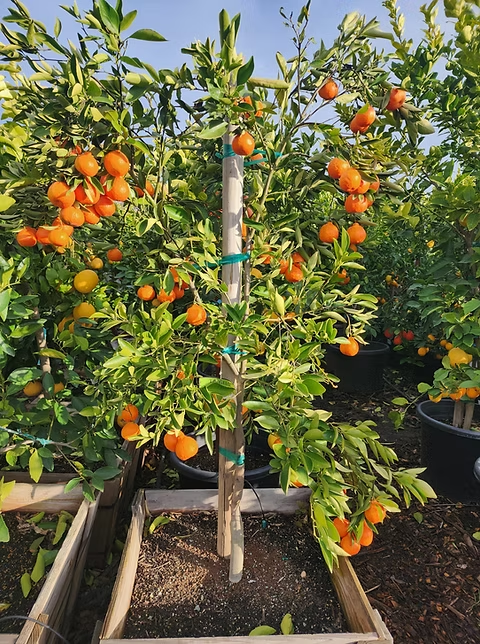
Selecting and Planting a Dancy Mandarin Tree
Proper selection and planting are critical for a healthy tree and abundant harvest.
1. Choosing a Tree
- Select a disease-free tree from a reputable nursery.
- Consider dwarf rootstock if you have limited space or want to grow in a container.
- Inspect the tree for healthy green leaves, strong branches, and a well-developed root system.
2. Choosing a Planting Site
- Sunlight: Full sun is essential; aim for 6–8 hours daily.
- Soil: Well-draining, loamy soil with a slightly acidic to neutral pH (6–7).
- Protection: Shelter from strong winds and frost-prone areas to protect blossoms and fruit.
3. Planting Steps
- Dig a hole twice as wide as the root ball.
- Mix soil with compost or organic matter for fertility and drainage.
- Place the tree upright, ensuring the graft union is above soil level.
- Fill in the hole, gently firm the soil, and water thoroughly.
- Apply 2–3 inches of mulch around the base, keeping it away from the trunk.
Container planting is ideal for cooler climates, allowing you to move the tree indoors during frost periods.
Caring for Dancy Mandarin Tangerines
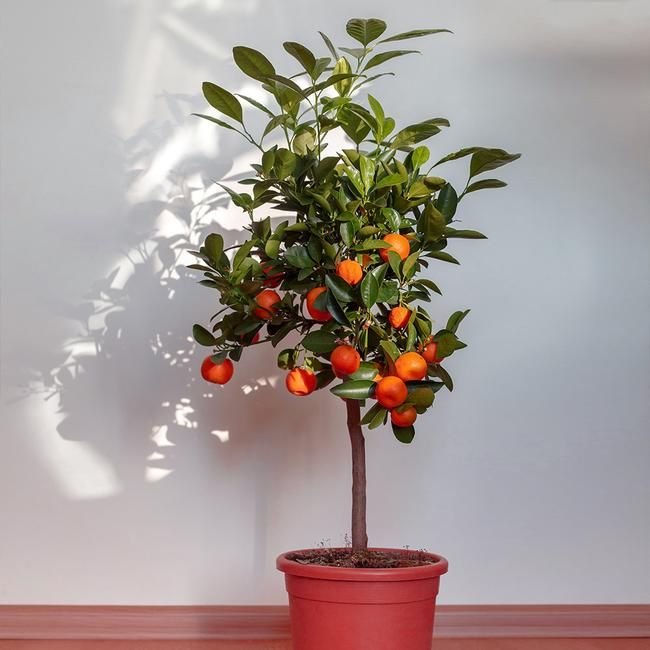
Consistent care is essential to encourage healthy growth, abundant flowering, and fruit production.
1. Watering
- Young trees need regular, deep watering to establish roots.
- Mature trees are drought-tolerant but produce better fruit with consistent moisture.
- Avoid waterlogging, which can cause root rot.
2. Fertilization
- Use a citrus-specific fertilizer high in nitrogen, phosphorus, and potassium.
- Fertilize 3–4 times a year, adjusting for container-grown trees.
- Micronutrients such as magnesium, iron, and zinc support leaf health and fruit quality.
3. Sunlight and Temperature
- Dancy mandarins thrive in full sun.
- Ideal temperatures range from 65–85°F (18–29°C).
- Protect young trees from frost with covers or by moving container plants indoors.
4. Pruning
- Remove dead, damaged, or crossing branches to improve airflow and reduce disease risk.
- Light pruning after harvest maintains tree shape but avoids excessive cutting that may reduce fruit production.
Flowering and Fruit Development
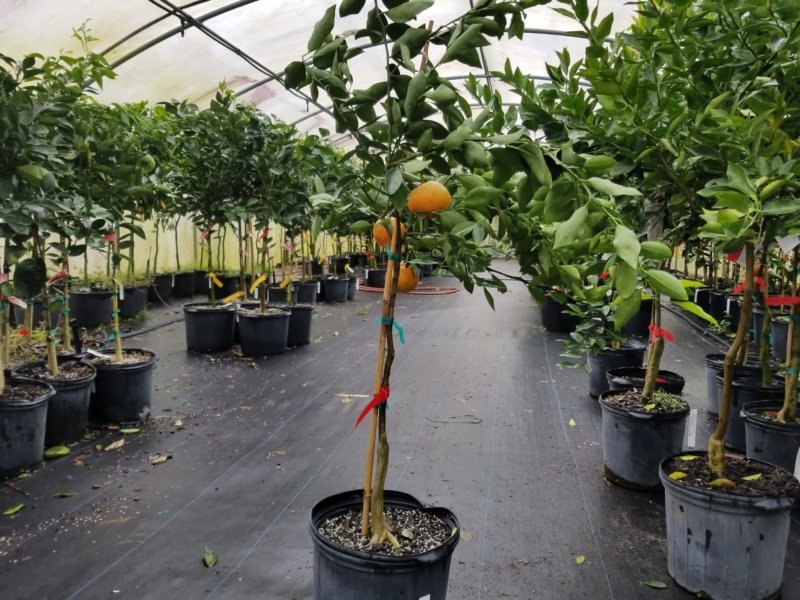
Dancy mandarin tangerines produce fragrant white flowers in spring that attract pollinators such as bees.
- Pollination: Mostly self-pollinating, but bees can improve fruit set and size.
- Fruit Development: After flowering, fruits gradually develop over 6–8 months.
- Harvest Timing: Fruits ripen in late fall to early winter, providing a seasonal supply of fresh citrus.
Proper care during flowering and fruit development ensures sweet, juicy, and abundant fruit.
Pest and Disease Management
Even hardy citrus trees can be affected by pests and diseases.
Common Pests
- Aphids: Sap-sucking insects that can be controlled with insecticidal soap.
- Scale Insects: Weaken the tree; treat with horticultural oil or prune infested areas.
- Spider Mites: Cause stippling on leaves; manage with water sprays or miticides.
Common Diseases
- Citrus Canker: Causes leaf and fruit lesions; remove affected areas promptly.
- Citrus Greening (HLB): Serious bacterial disease; purchase disease-free trees and monitor regularly.
- Root Rot: Caused by waterlogged soil; ensure proper drainage.
Regular monitoring, early detection, and proper cultural practices keep your Dancy mandarin tree healthy.
Harvesting Dancy Mandarin Tangerines
Knowing when to harvest is key to enjoying sweet, flavorful fruit.
Signs of Maturity
- Color: Bright, uniform orange skin.
- Firmness: Slightly firm but yields under gentle pressure.
- Ease of Picking: Fruits should detach easily with a slight twist.
- Taste Test: Sample a fruit; it should be sweet and juicy with minimal acidity.
Dancy mandarins do not continue to ripen significantly after picking, so timing is critical for peak flavor.
Enjoying Your Dancy Mandarins
Dancy mandarins are versatile and delicious:
- Fresh Eating: Peel and enjoy as a snack.
- Juicing: Sweet, low-acid juice perfect for breakfast.
- Culinary Uses: Add to salads, desserts, or savory dishes.
- Gifting: Homegrown mandarins make thoughtful, seasonal gifts.
Their sweet, aromatic flavor and easy-peel skin make them a favorite for both home consumption and entertaining.
Tips for a Successful Dancy Mandarin Tree
- Start with Healthy Trees: Disease-free nursery stock ensures a strong start.
- Provide Full Sun: Essential for flowering and fruit development.
- Consistent Watering: Avoid stress to improve fruit size and sweetness.
- Regular Fertilization: Supports healthy foliage and fruiting.
- Light Pruning: Maintains shape and encourages air circulation.
- Monitor for Pests and Disease: Early intervention prevents significant damage.
- Container Growing: Ideal for small spaces or areas prone to frost.
By following these tips, your Dancy mandarin tree can provide years of delicious, sweet fruit.
Conclusion
Growing Dancy mandarin tangerines is a rewarding experience for any gardener. These sweet, easy-to-peel fruits are perfect for fresh eating, juicing, and culinary uses, while the compact, ornamental tree adds beauty to your garden.
From selecting the right nursery stock and planting site to consistent care, pest management, and careful harvesting, each step contributes to a healthy, productive tree. With patience and attention, a single Dancy mandarin tree can provide an abundant harvest that delights the senses and enhances your homegrown citrus collection.
By cultivating this classic variety, you enjoy not just the fruit but the satisfaction of growing something truly delicious in your own backyard.
